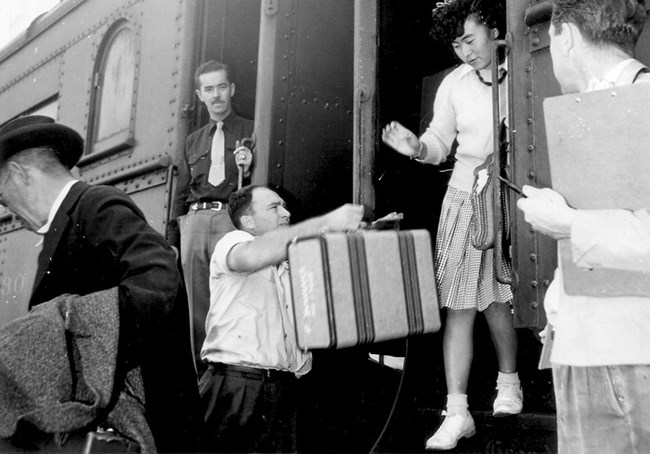
National Archives and Records Administration Immediately following the forced removal, people were held in temporary detention facilities while the prison camps were being built. Most of the temporary detention centers were fairgrounds or race tracks. As the more permanent prison camps were being constructed, incarcerees would be put on a train with the blinds drawn shut to these sites. Minidoka imprisoned people from Oregon, Washington, and Alaska2. When the first incarcerees arrived at Minidoka, the camp was only partially constructed. Sewage systems and plumbing would not be completed for several months3. Due to the influx of incarcerees arriving and the need for housing, the barracks were crudely and swiftly constructed. Additionally, the greenwood and tar paper used to construct the barracks offered little protection from the harsh environment4. 1Jeffrey F. Burton et al., Confinement and Ethnicity: An Overview of World War II Japanese American Relocation Sites, (Seattle: National Park Service, 1999), accessed June 30, 2019. 2Our 'Home' For The Duration," Minidoka Irrigator, March 23, 1942. 3WRA Report No. 1, March 18- June 30, 1942. p.13. 4Connie Y. Chiang. “Choosing Camps, Building Camps” Nature Behind Barbed Wire. Oxford University Press. (New York, 2018). 55. |
Last updated: August 19, 2019
